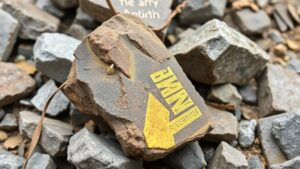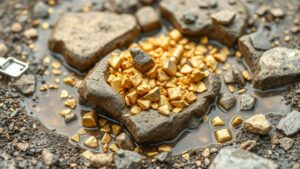Identifying Gold Deposits in Rocky Desert Washes Using Surface Indicators
Identifying Gold Deposits in Rocky Desert Washes Using Surface Indicators
The search for gold has captured the imaginations of prospectors and geologists for centuries. While the traditional methods of underground mining have been well documented, identifying gold deposits using surface indicators in rocky desert washes presents a unique approach that emphasizes geology and environmental clues. This article delves into the techniques and indicators used to locate potential gold deposits effectively.
Understanding Gold Deposition
Gold is primarily deposited through geological processes involving hydrothermal fluids, erosion, and sedimentation. e processes can lead to the concentration of gold in specific areas, especially in washes–small watercourses that flow during periods of rainfall. Over time, weathering and erosion expose these deposits at the surface.
Key Surface Indicators
When searching for gold in desert washes, several surface indicators can suggest the presence of underlying deposits. The following indicators are particularly relevant:
- Color Changes in Soil: Soil exhibiting a greater concentration of iron oxides may indicate mineralization. A reddish or yellowish tint can often suggest the possible presence of gold.
- Quartz Veins: Gold is frequently associated with quartz. The presence of quartz veins in washes may indicate a proximity to precious metal deposits.
- Heavy Mineral Concentrations: The accumulation of heavy minerals like magnetite or hematite often signifies nearby gold deposits, as gold tends to settle with these heavier materials.
- Modified Vegetation: Vegetation may show signs of stress or growth anomalies due to the mineral content in the soil. Stunted or unusually colored plants can point toward areas of mineralization.
Geological Context and Mapping
A detailed understanding of the geological context in which gold deposits form is crucial. Geologists often use maps to identify regions known for previous gold findings, focusing on specific rock types and formations known to host gold, such as schist and granitic intrusions.
Satellite imagery and geospatial analysis can assist in detecting patterns that are often associated with mineralization. Topographic maps revealing stream beds and washes provide vital information on water flow and erosion patterns, which can lead prospectors to potential gold-rich areas.
Case Studies and Real-World Applications
Several successful mining operations have utilized surface indicators to locate gold deposits in desert environments. For example, the Nevada Gold Mines–which includes several operations like Carlin Trend–relies heavily on surface sampling and geochemical analysis to guide their exploration efforts. utilization of surface indicators has allowed for the discovery of extensive deposits–illustrating not merely the practicality of surface indicators, but their effectiveness in modern prospecting.
Another significant example is the Sutter Gold Mining Company, located in California. By analyzing surface indicators in the Mother Lode Region, they successfully identified areas with high potential for gold deposits, leading to lucrative mining operations. This case underscores the importance of integrating traditional prospecting methods with contemporary geological sciences for effective gold exploration.
Potential Challenges
While identifying surface indicators can greatly enhance the likelihood of locating gold deposits, several challenges can arise. For one, many surface indicators may also point to other minerals, leading to potential misidentification. Also, environmental factors such as erosion or human activity can obscure or alter surface indicators.
Also, the reliance on surface indicators should be complemented with subsurface exploration, such as drilling and sampling, to confirm the presence of gold at a deeper level. Careful consideration of the local geology and extensive fieldwork remain vital components of a successful prospecting strategy.
Actionable Takeaways
For those interested in identifying gold deposits in rocky desert washes, here are some actionable takeaways:
- Pay careful attention to color changes and mineral concentrations in soil.
- Look for quartz veins, which can indicate proximity to gold.
- Use geological maps and satellite imagery to assess high-potential areas.
- Combine surface exploration with geological testing for a comprehensive approach.
- Leverage case studies of successful gold mining operations as learning models.
By utilizing these strategies, prospectors increase their chances of uncovering the elusive gold deposits hidden within the sediments of rocky desert washes. Following a disciplined approach that combines experience, observation, and scientific methods can lead to successful discoveries in the alluring quest for gold.


